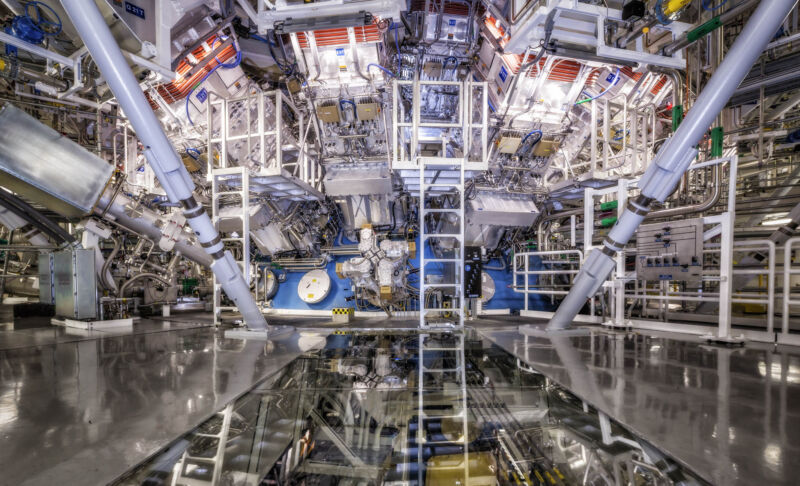What enabled the big boost in fusion energy announced this week?

Enlarge / Where the action happens inside the National Ignition Facility. (credit: Damien Jemison/LLNL)
On Tuesday, the US Department of Energy (DOE) confirmed information that had leaked out earlier this week: its National Ignition Facility had reached a new milestone, releasing significantly more fusion energy than was supplied by the lasers that triggered the fusion. "Monday, December 5, 2022 was an important day in science," said Jill Hruby, head of the National Nuclear Security Administration. "Reaching ignition in a controlled fusion experiment is an achievement that has come after more than 60 years of global research, development, engineering, and experimentation."
In terms of specifics, the lasers of the National Ignition Facility deposited 2.05 megajoules into their target in that experiment. Measurements of the energy released afterward indicate that the resulting fusion reactions set loose 3.15 megajoules, a factor of roughly 1.5. That's the highest output-to-input ratio yet achieved in a fusion experiment.
Before we get to visions of fusion power plants dotting the landscape, however, there's the uncomfortable fact that producing the 2 megajoules of laser power that started the fusion reaction took about 300 megajoules of grid power, so the overall process is nowhere near the break-even point. So, while this was a real sign of progress in getting this form of fusion to work, we're still left with major questions about whether laser-driven fusion can be optimized enough to be useful. At least one DOE employee suggested that separating it from its nuclear-testing-focused roots may be needed to do so.